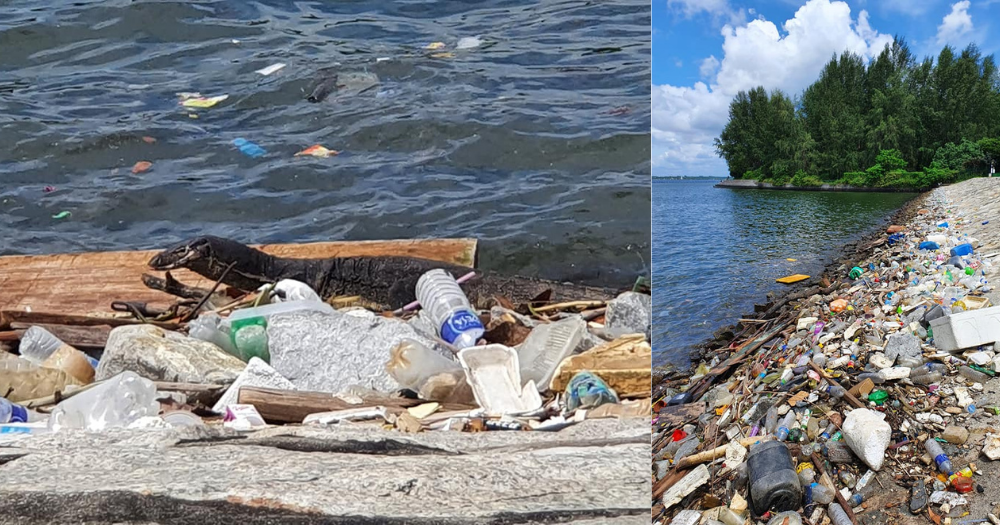Plastic is everywhere, but it isn't great when you spot it in the mouth of a wild animal.
A Singaporean woman who headed to Coney Island on Monday (Nov. 16) spotted a baby monitor lizard with plastic in its mouth, that was possibly scavenging amongst the trash.
Here's the photo of the baby monitor lizard she spotted:
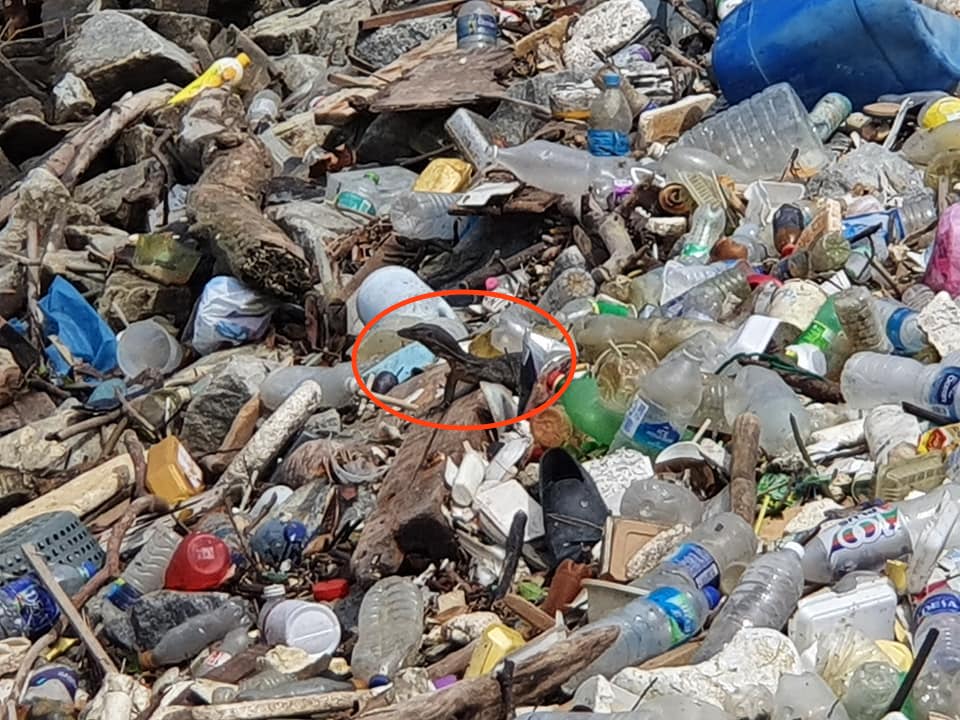
Shocking amount of trash seen at Coney Island on Nov. 16
Seeto told Mothership that she spotted the distressing scene around 2pm on Monday (Nov. 16).
She shared that she rarely heads to Coney Island as she lives in the west of Singapore, but was attempting the Coast-to-Coast trail on that day.
She also shared photos on Facebook of the large pile of trash on the seawall near Coney Island (as seen below):
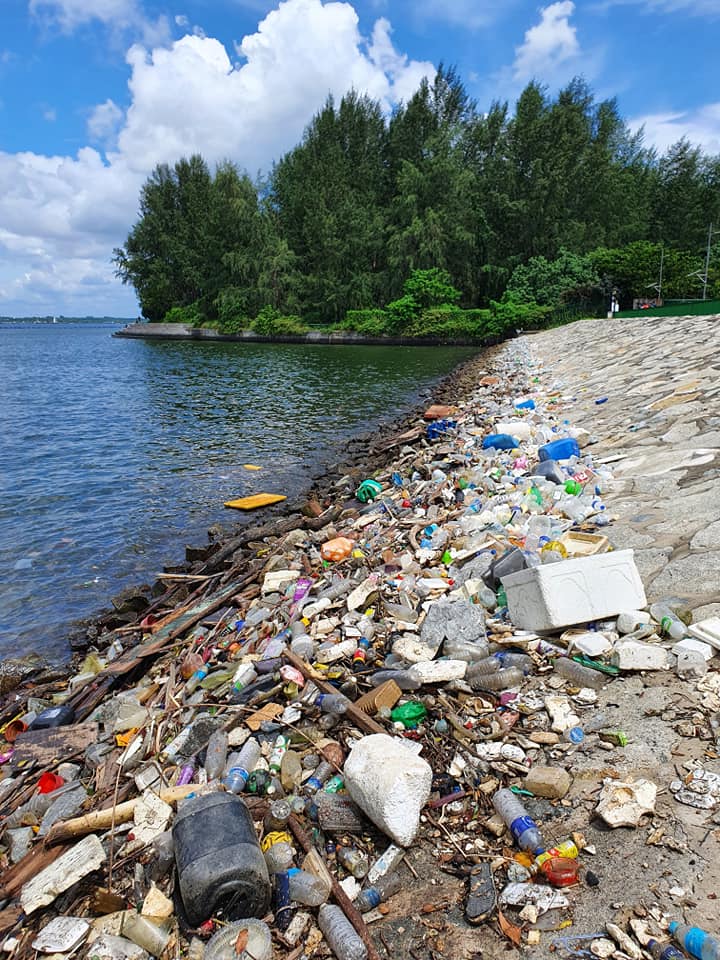 Photo by Hui-E Seeto
Photo by Hui-E Seeto
Here's a photo of another monitor lizard she spotted among the trash:
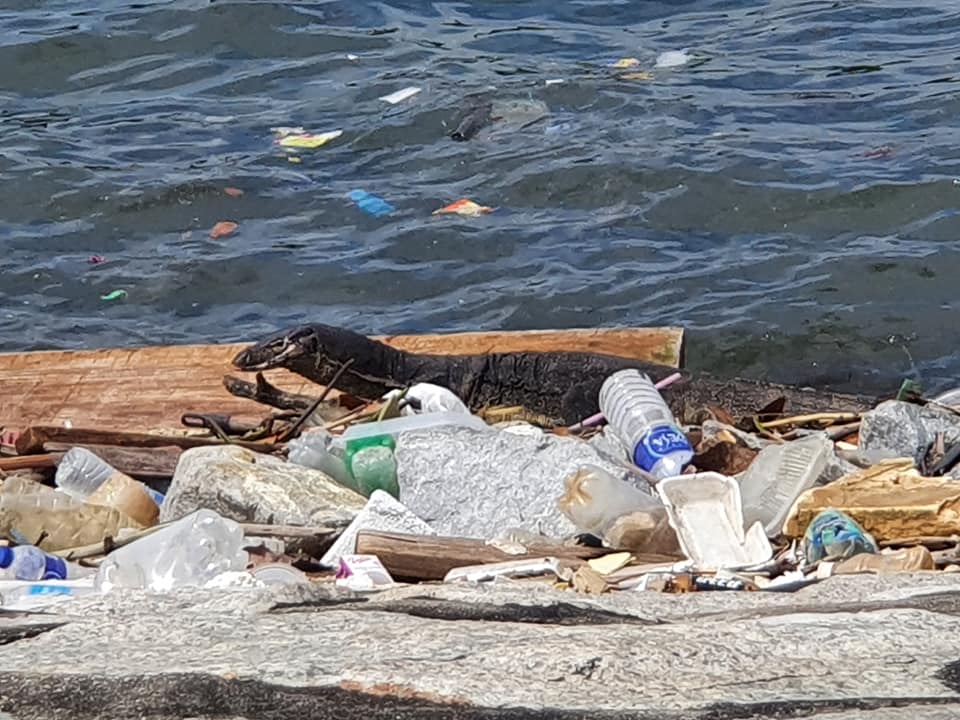 Photo by Hui-E Seeto
Photo by Hui-E Seeto
"Think of the microplastics that will get in the water and ecosystem"
When asked how the scene made her felt, Seeto said that she was "horrified by the sight".
"My hubby and I were utterly gutted seeing wildlife amongst the trash. Think of the microplastics that will get in the water and ecosystem. We were also frustrated that it was a reflection of the amount of single use plastic."
In her Facebook post, she also added that there are multiple sources of trash, such as picnickers, people fishing, passing cyclists, and hikers, and even Johor, Malaysia.
However, she added that the source of the trash does not matter, but rather being conscious of our personal impact and to throw rubbish in bins.
Trash has apparently been cleaned up on Nov. 17
Seeto also told Mothership that according to a comment on her original post, the trash at Coney Island was being cleaned up on Tuesday (Nov. 17).
Here's a photo of people on the seawall on Tuesday that was left on Seeto's post by user, Aishah Razak:
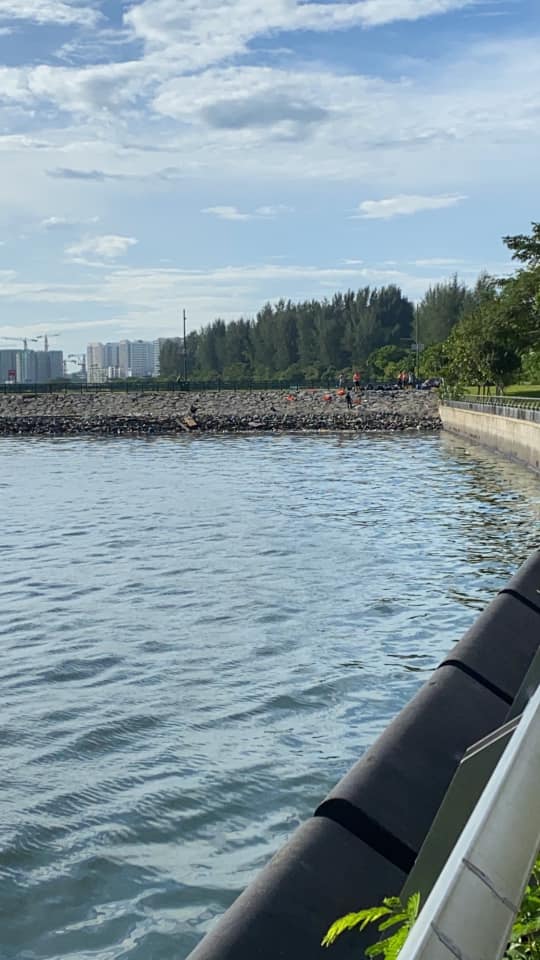 Photo via Aishah Razak/Facebook
Photo via Aishah Razak/Facebook
According to NEA's website, large amounts of trash are observed at certain parts of the year due to the Southwest and Northeast monsoon periods:
“Typically, during the Southwest monsoon months, beaches along the southern cost will experience more flotsam and during the Northeast monsoon months, those along the northern coast will experience an increase in flotsam.”
The Southwest monsoon tends to occur between June to September, while the Northeast monsoon occurs from November to March.
During these periods, NEA increases the frequency of beach cleaning, from four times a week to twice daily.
However, despite increased frequency of cleaning, it is hard to completely eliminate the presence of trash at our beaches, as during each high tide, new waves of floating debris from the open sea will be washed onto our shores.
Related stories
Totally unrelated but follow and listen to our podcast here
Top images by Hui-E Seeto
If you like what you read, follow us on Facebook, Instagram, Twitter and Telegram to get the latest updates.
